Abstract
The slow inactivation which accompanies catalysis by higher-plant ribulose-P2 carboxylase-oxygenase (Rubisco) in vitro was only partially reversed when the enzyme was gel filtered to remove small molecules. However, gel filtration or dialysis in the presence of high SO2-4 concentrations induced full recovery. This suggests that the inactivation is caused by a tight-binding inhibitor whose effective affinity is reduced by competition with SO2-4 ions, which are known to bind at the catalytic site. The involvement of an inhibitor was confirmed by observations that supernatants obtained after acid-precipitation of inactivated Rubisco were inhibitory when applied to fresh enzyme. The inhibitor bound slowly and tightly and showed strong negative cooperativity. The inhibitor was moderately unstable at pH 8.3, decaying with a halflife of several hours, but was more stable at pH 2. It was destroyed by phosphatase treatment but not by H2O2 or o-phenylenediamine, compounds which react with vicinal dicarbonyl groups. It did not contain a carbon atom derived from substrate CO2. Possibilities concerning the identity, genesis, and physiological relevance of this inhibitor are discussed.
Full text
PDF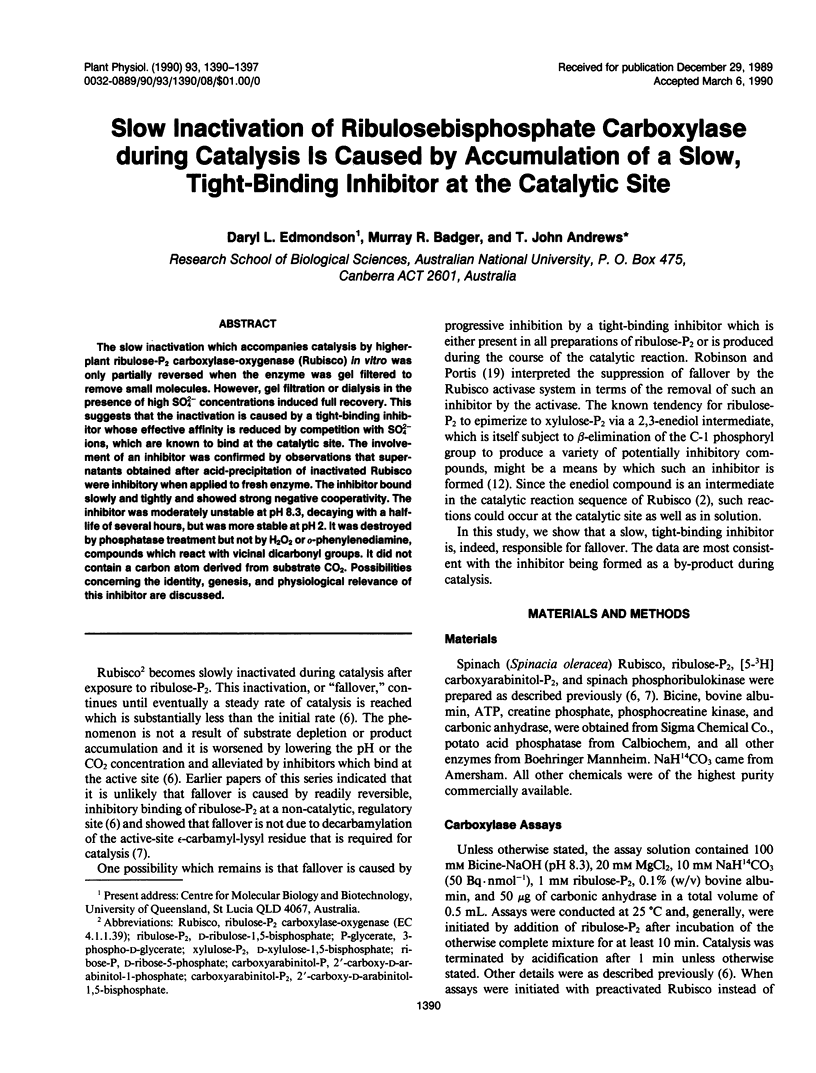
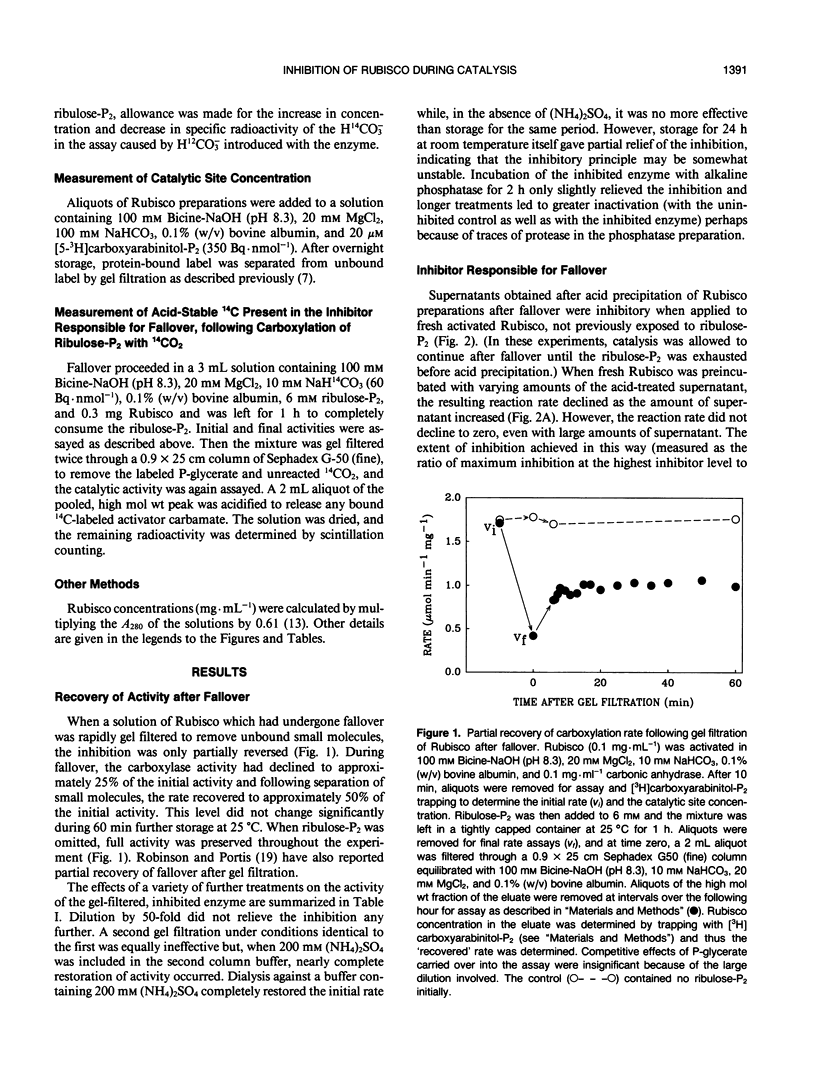
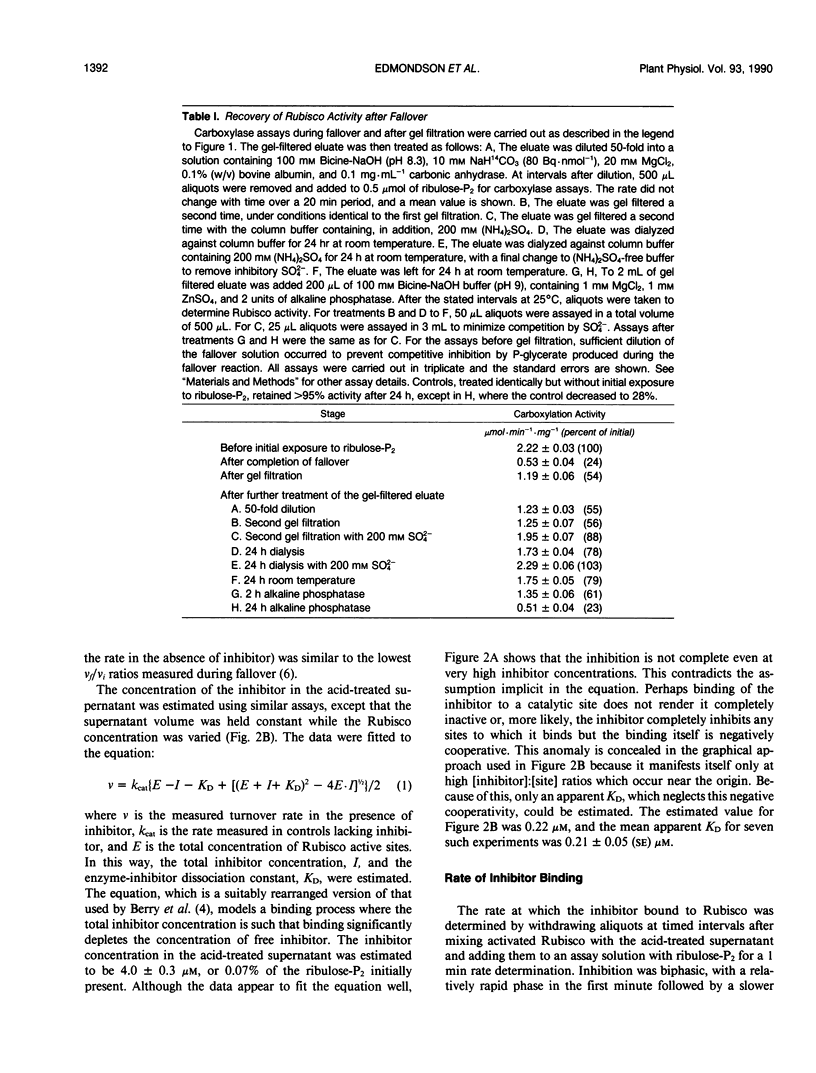
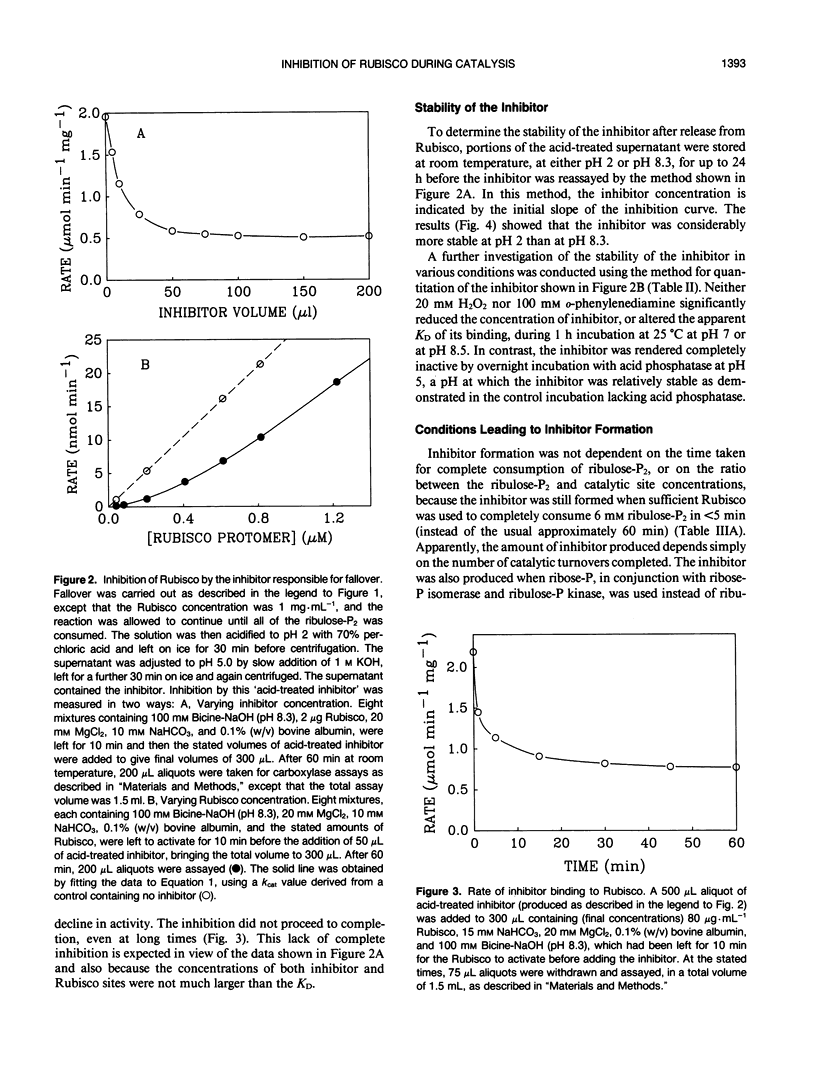
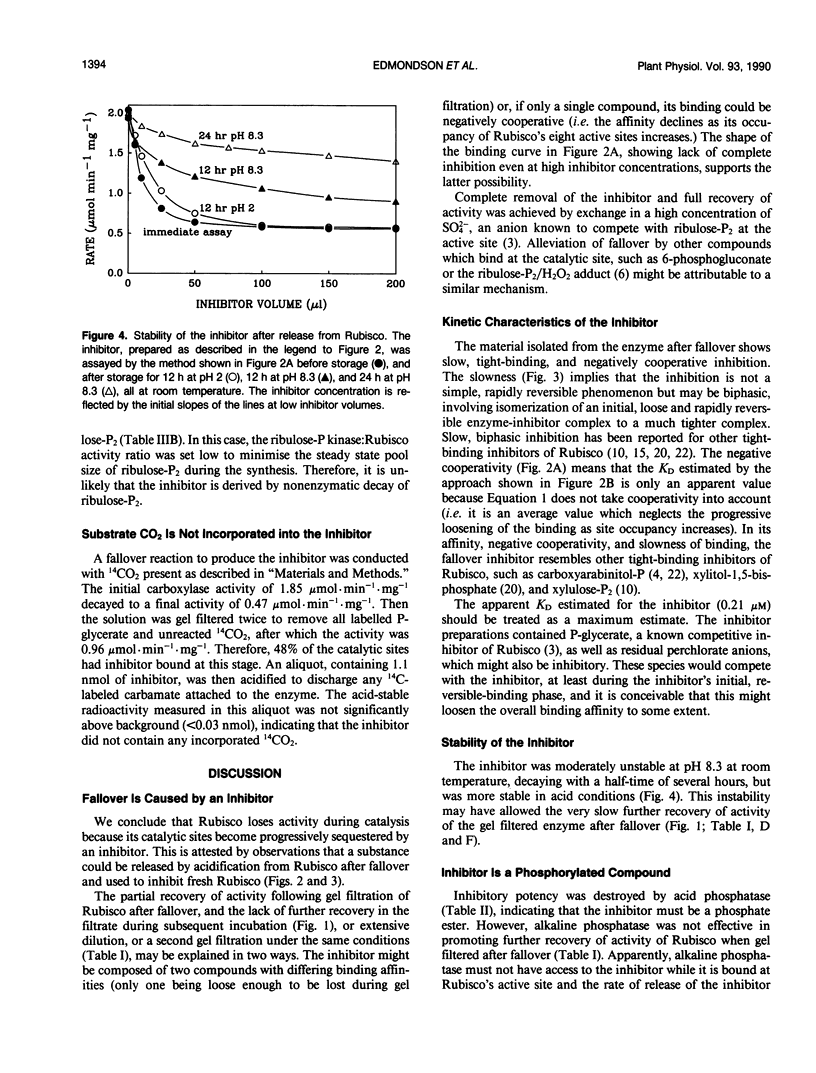
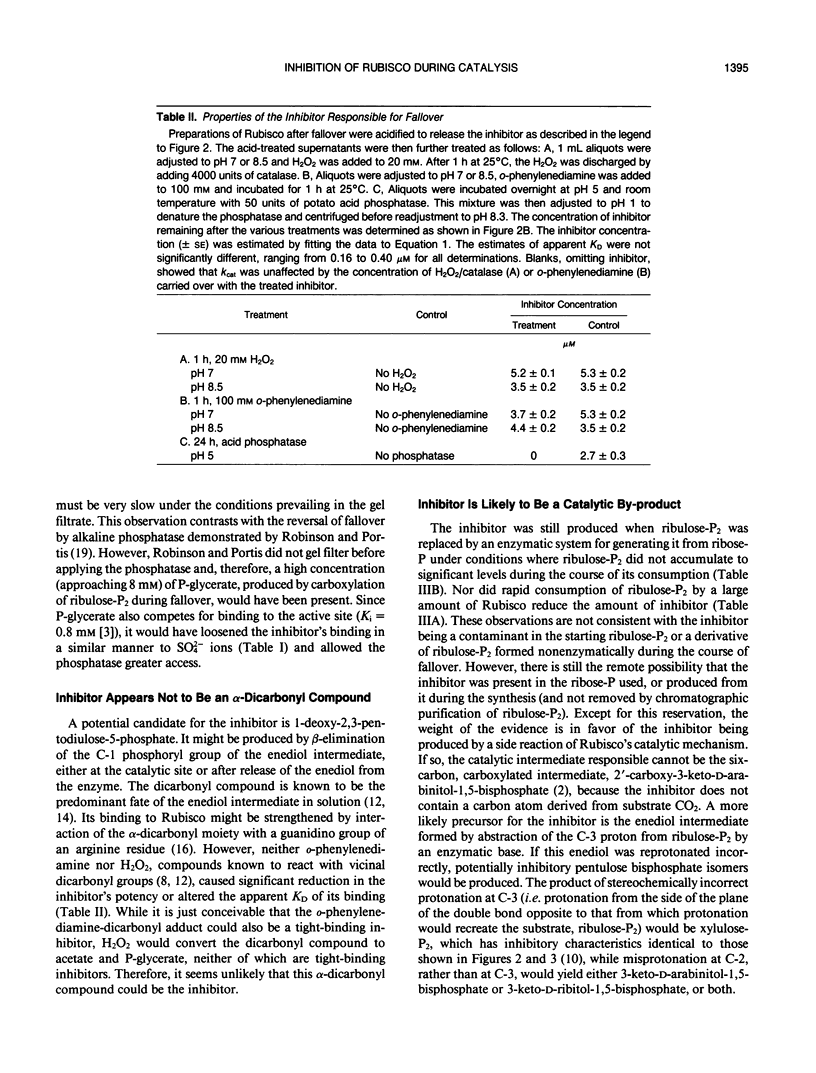
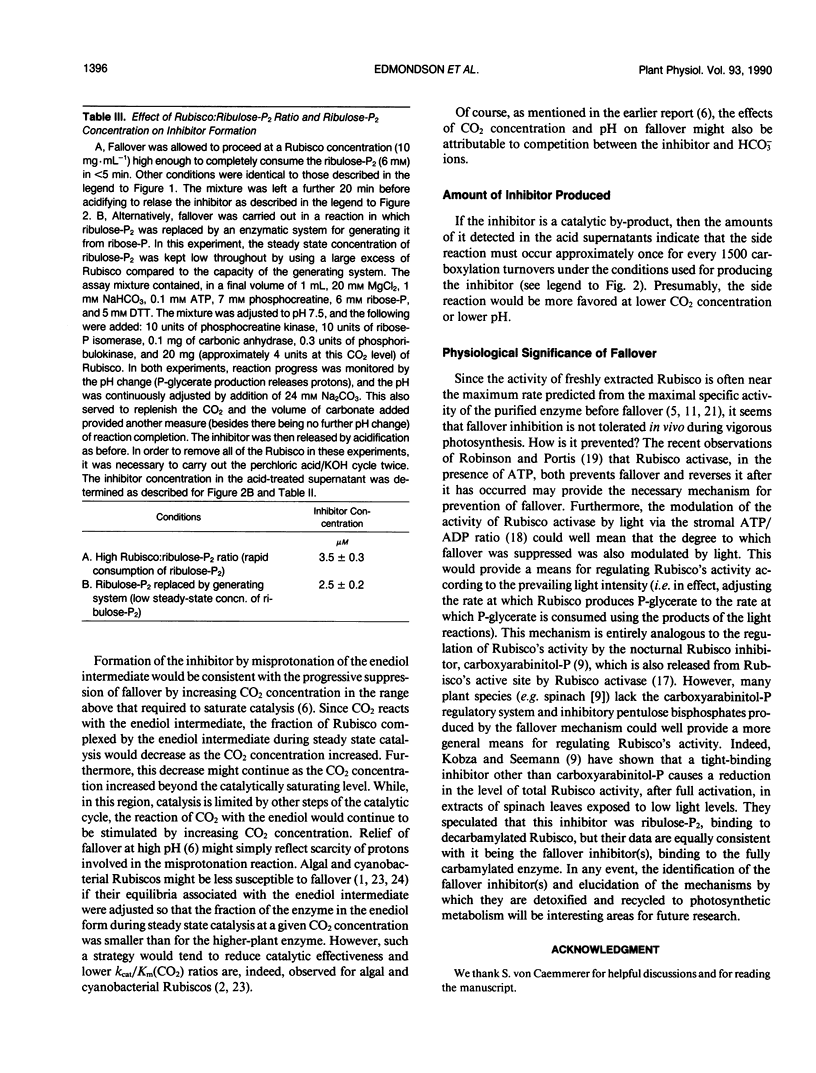
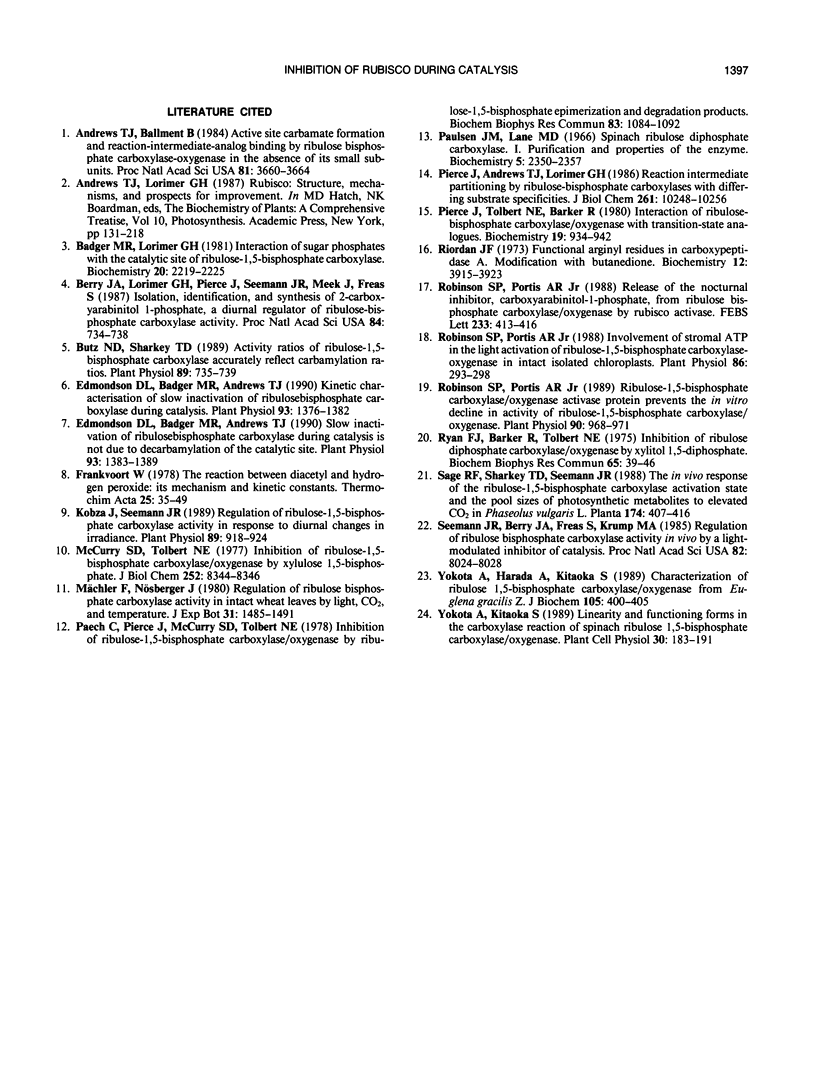
Selected References
These references are in PubMed. This may not be the complete list of references from this article.
- Andrews T. J., Ballment B. Active-site carbamate formation and reaction-intermediate-analog binding by ribulosebisphosphate carboxylase/oxygenase in the absence of its small subunits. Proc Natl Acad Sci U S A. 1984 Jun;81(12):3660–3664. doi: 10.1073/pnas.81.12.3660. [DOI] [PMC free article] [PubMed] [Google Scholar]
- Badger M. R., Lorimer G. H. Interaction of sugar phosphates with the catalytic site of ribulose-1,5-bisphosphate carboxylase. Biochemistry. 1981 Apr 14;20(8):2219–2225. doi: 10.1021/bi00511a023. [DOI] [PubMed] [Google Scholar]
- Berry J. A., Lorimer G. H., Pierce J., Seemann J. R., Meek J., Freas S. Isolation, identification, and synthesis of 2-carboxyarabinitol 1-phosphate, a diurnal regulator of ribulose-bisphosphate carboxylase activity. Proc Natl Acad Sci U S A. 1987 Feb;84(3):734–738. doi: 10.1073/pnas.84.3.734. [DOI] [PMC free article] [PubMed] [Google Scholar]
- Butz N. D., Sharkey T. D. Activity ratios of ribulose-1,5-bisphosphate carboxylase accurately reflect carbamylation ratios. Plant Physiol. 1989 Mar;89(3):735–739. doi: 10.1104/pp.89.3.735. [DOI] [PMC free article] [PubMed] [Google Scholar]
- Edmondson D. L., Badger M. R., Andrews T. J. A Kinetic Characterization of Slow Inactivation of Ribulosebisphosphate Carboxylase during Catalysis. Plant Physiol. 1990 Aug;93(4):1376–1382. doi: 10.1104/pp.93.4.1376. [DOI] [PMC free article] [PubMed] [Google Scholar]
- Edmondson D. L., Badger M. R., Andrews T. J. Slow Inactivation of Ribulosebisphosphate Carboxylase during Catalysis Is Not Due to Decarbamylation of the Catalytic Site. Plant Physiol. 1990 Aug;93(4):1383–1389. doi: 10.1104/pp.93.4.1383. [DOI] [PMC free article] [PubMed] [Google Scholar]
- Kobza J., Seemann J. R. Regulation of ribulose-1,5-bisphosphate carboxylase activity in response to diurnal changes in irradiance. Plant Physiol. 1989 Mar;89(3):918–924. doi: 10.1104/pp.89.3.918. [DOI] [PMC free article] [PubMed] [Google Scholar]
- McCurry S. D., Tolbert N. E. Inhibition of ribulose-1,5-bisphosphate carboxylase/oxygenase by xylulose 1,5-bisphosphate. J Biol Chem. 1977 Dec 10;252(23):8344–8346. [PubMed] [Google Scholar]
- Paech C., Pierce J., McCurry S. D., Tolbert N. E. Inhibition of ribulose-1,5-biphosphate carboxylase/oxygenase by ribulose-1,5-bisphosphate epimerization and degradation products. Biochem Biophys Res Commun. 1978 Aug 14;83(3):1084–1092. doi: 10.1016/0006-291x(78)91506-1. [DOI] [PubMed] [Google Scholar]
- Paulsen J. M., Lane M. D. Spinach ribulose diphosphate carboxylase. I. Purification and properties of the enzyme. Biochemistry. 1966 Jul;5(7):2350–2357. doi: 10.1021/bi00871a025. [DOI] [PubMed] [Google Scholar]
- Pierce J., Andrews T. J., Lorimer G. H. Reaction intermediate partitioning by ribulose-bisphosphate carboxylases with differing substrate specificities. J Biol Chem. 1986 Aug 5;261(22):10248–10256. [PubMed] [Google Scholar]
- Pierce J., Tolbert N. E., Barker R. Interaction of ribulosebisphosphate carboxylase/oxygenase with transition-state analogues. Biochemistry. 1980 Mar 4;19(5):934–942. doi: 10.1021/bi00546a018. [DOI] [PubMed] [Google Scholar]
- Riordan J. F. Functional arginyl residues in carboxypeptidase A. Modification with butanedione. Biochemistry. 1973 Sep 25;12(20):3915–3923. doi: 10.1021/bi00744a020. [DOI] [PubMed] [Google Scholar]
- Robinson S. P., Portis A. R. Involvement of stromal ATP in the light activation of ribulose-1,5-bisphosphate carboxylase/oxygenase in intact isolated chloroplasts. Plant Physiol. 1988 Jan;86(1):293–298. doi: 10.1104/pp.86.1.293. [DOI] [PMC free article] [PubMed] [Google Scholar]
- Robinson S. P., Portis A. R. Ribulose-1,5-bisphosphate carboxylase/oxygenase activase protein prevents the in vitro decline in activity of ribulose-1,5-bisphosphate carboxylase/oxygenase. Plant Physiol. 1989 Jul;90(3):968–971. doi: 10.1104/pp.90.3.968. [DOI] [PMC free article] [PubMed] [Google Scholar]
- Ryan F. J., Barker R., Tolbert N. E. Inhibition of ribulose diphosphate carboxylase/oxygenase by xylitol 1,5-diphosphate. Biochem Biophys Res Commun. 1975 Jul 8;65(1):39–46. doi: 10.1016/s0006-291x(75)80058-1. [DOI] [PubMed] [Google Scholar]
- Seemann J. R., Berry J. A., Freas S. M., Krump M. A. Regulation of ribulose bisphosphate carboxylase activity in vivo by a light-modulated inhibitor of catalysis. Proc Natl Acad Sci U S A. 1985 Dec;82(23):8024–8028. doi: 10.1073/pnas.82.23.8024. [DOI] [PMC free article] [PubMed] [Google Scholar]
- Yokota A., Harada A., Kitaoka S. Characterization of ribulose 1,5-bisphosphate carboxylase/oxygenase from Euglena gracilis Z. J Biochem. 1989 Mar;105(3):400–405. doi: 10.1093/oxfordjournals.jbchem.a122676. [DOI] [PubMed] [Google Scholar]


